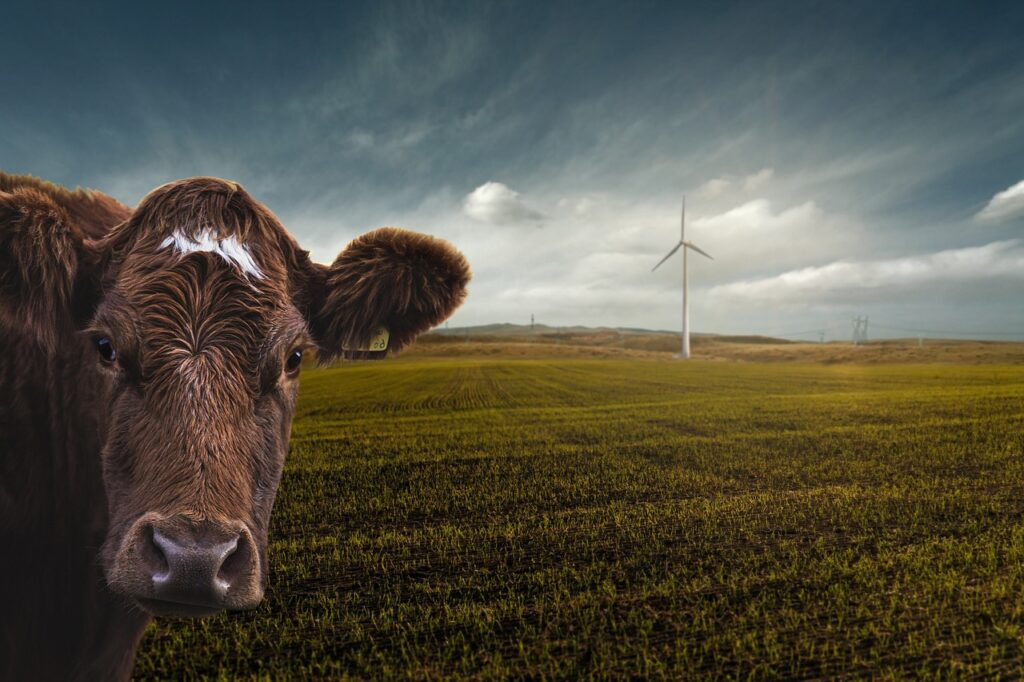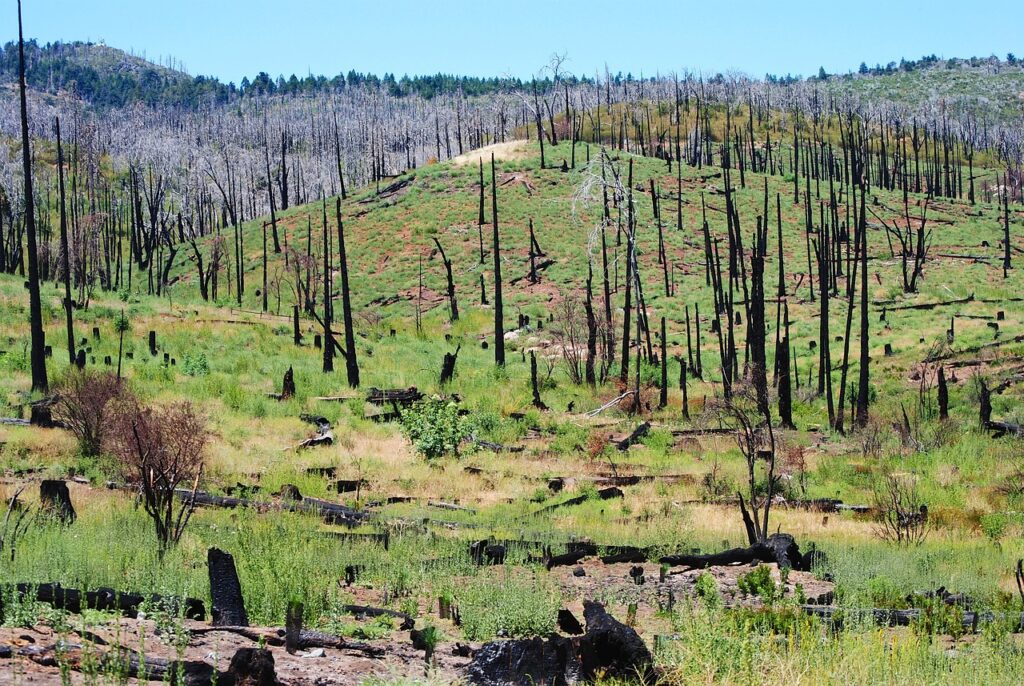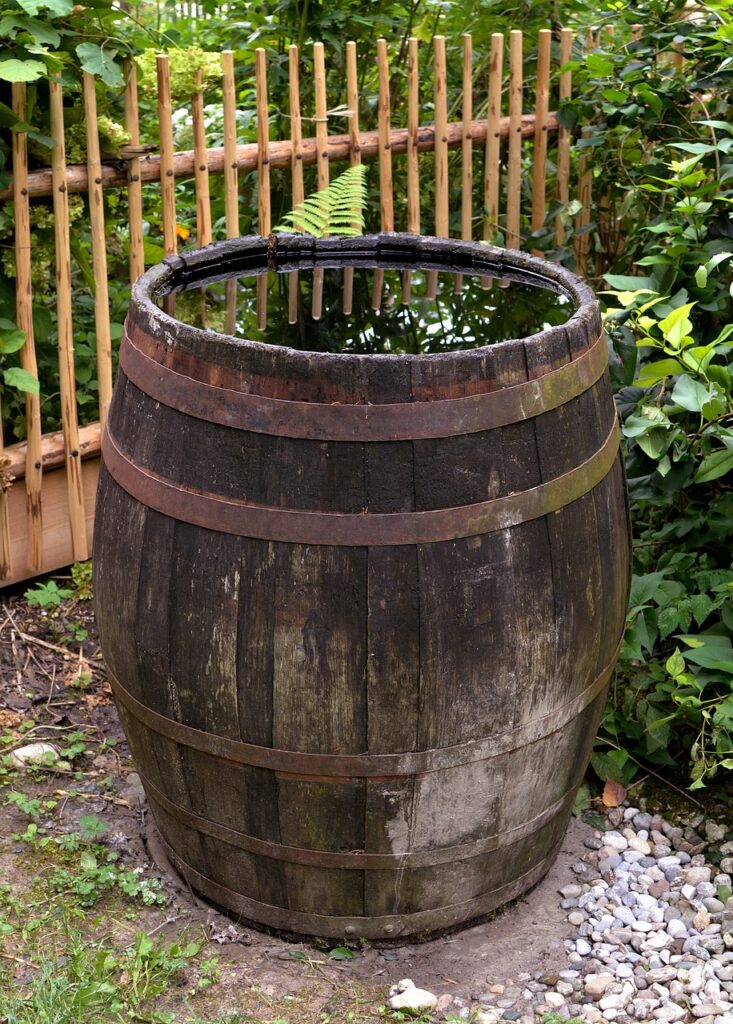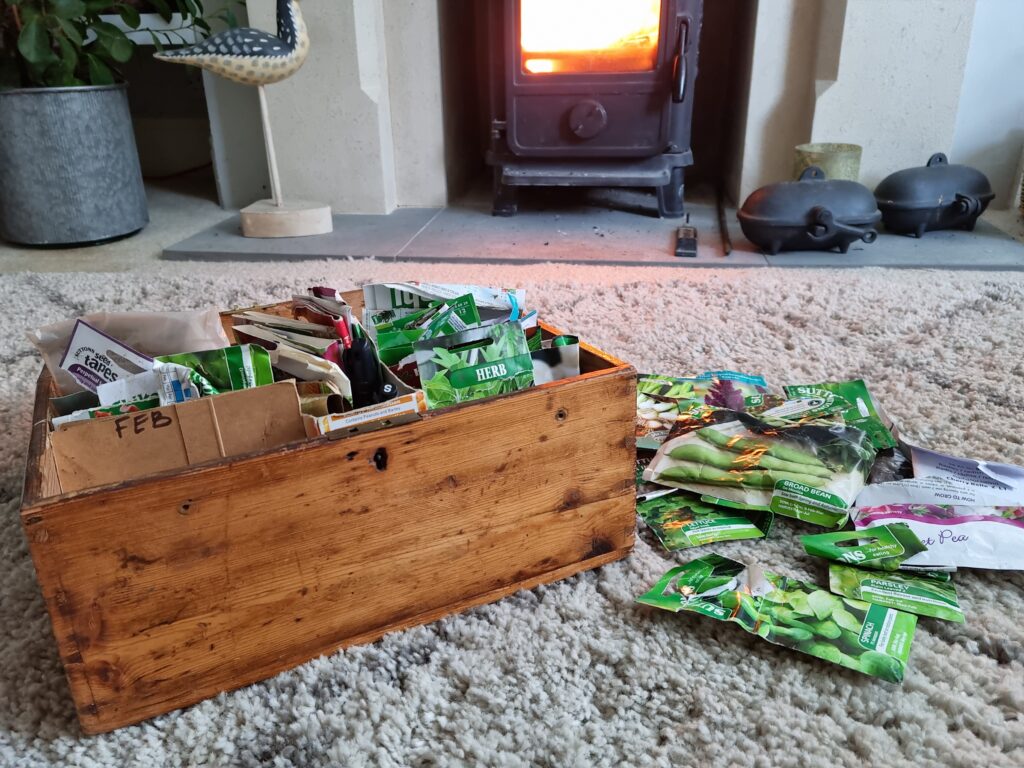
So, what is Carbon Sequestration?
Carbon sequestration is the capturing, removal, and storage of carbon dioxide (CO2) from the earth’s atmosphere. It’s recognised as a key method for removing carbon from the earth’s atmosphere. In our gardens, we can achieve this by planting trees and shrubs and how we manage and use our soil.
Carbon is an abundant non-metal element from the periodic table made of one type of atom that is known to be a building block of life. It comes in three different forms graphite, diamond, and graphene.
At room temperature, it is in a solid state, but it can be dissolved in seawater or turned into a gas.
Interestingly, our human body is made of 20% carbon combined with other elements and all living things are made up of carbon. It’s essential to the existence of life on Earth.
Carbon Dioxide is a compound gas consisting of one carbon atom connected to two oxygen atoms. Humans mainly produce CO2 by burning carbon and organic compounds such as petrol, diesel, coal, wood and gas, land use changes and by industrial processes. In nature, it is also produced by ocean-atmosphere exchange (where CO2 is absorbed and released into the atmosphere), plant and animal respiration, soil respiration and decomposition, and some through volcanic eruptions. It is naturally present in the air and is an important part of the balance of life.
What happens when carbon dioxide enters the atmosphere?
In the atmosphere, carbon dioxide is a greenhouse gas that keeps the earth warm. There should be about 1% and it’s essential to survival as it helps the earth hold the sun’s energy. Without carbon dioxide, our planet would be frozen solid.
The stark problem is that we are simply producing too much carbon dioxide through the burning of fossil fuels in today’s world. Globally, over 80% of our global energy use comes from fossil fuels annually, so it’s driving up the CO2 levels.
Carbon dioxide is a great insulator for the planet, but it is possible to have too much of a good thing. By driving our cars and running our power stations, the carbon dioxide levels are above where they need to keep equilibrium balanced. Earth is warming up causing devastating changes in sea levels, climate, and weather systems.
This has the effect of displacing people, famine, affecting wildlife, making species extinct and leaving us all with an uncertain future.

Reduce carbon dioxide emissions
The biggest solution is to reduce carbon emissions by turning to green energy, not using fossil fuels from carbon reserves. We must find practices in our daily life that’ll reduce our carbon footprint and encourage carbon sequestration.
“Through my experience, I’ve become more and more aware of how soil works, through not working it! I’ve increased my understanding of biodiversity and the need to keep carbon in the soil. Digging, and any form of soil exposure, releases CO2 into the atmosphere. No dig keeps carbon locked in the soil, and carbon in many forms is the building block of soil structure and food.”
Governments around the world have pledged to take measures to combat this and reduce our fossil fuel consumption. Although actions are painfully slow. Climate change is progressing quicker than expected. A 24% reduction of CO2 levels is needed by 2030. This’ll take us to pre-1990s levels which is widely regarded as a good target.
What simple measures can we do to help reducing our carbon footprint in the garden?
There is lots of talk about measures we can take to reduce our carbon footprint in the home. Yet precious little about what we can do in the garden. Yes, I know that our houses are a large source of CO2 emissions. But every little helps.
Here are some simple green gardening steps you can take:
- No dig- This method has been championed by the well-known Charles Dowding. He is an English horticulturalist and author who has pioneered modern no-dig and organic soil management since 1982. It’s less work, higher yielding and better for the planet.
- No artificial fertilisers are needed – If you are continually mulching with garden compost then you probably don’t need to add any fertilisers. Likewise, if you use a mulching mower on lawns which chops up the grass clippings into tiny bits and deposits them on the lawn then you are not depleting the lawn nutrients and you have no need to fertilise it! Much cheaper and easier.
- Plant trees – Plants absorb and store Carbon Dioxide. The bigger the plant, the more it can store. Therefore, trees are the best at this as they grow vertically and take up less space. If you have room for even one tree, then all the better. It doesn’t have to be very big to have a huge effect.
And more ideas…
- No artificial lawns – This is one of my pet hates. Not only do you have a sterile area of ground below the Astroturf, but you also have an issue with manufacturing and disposing of the product. Don’t do it! Natural grass is best.
- Collect rainwater rather than using tap water – tap water (potable water) accounts for 6% of the CO2 emissions in the UK (Energy saving Trust). Plants also prefer rainwater.
- Composting – This is a valuable resource for us to use in the garden. With a bit of guidance, we can all compost all of our garden and food waste. The UK only recycles 14% of food waste. The rest goes to landfill and rots where it produces damaging methane (Resource.co).
- Growing our own food – This is hugely satisfying and saves us money.
- Mulching -This reduces the need for water and helps to keep nutrients locked into the soil by reducing nutrients being washed into our waterways.

It’s not all doom and gloom
Our gardens make up a large proportion of our green spaces in the UK. If we all do our little bit, then we can make a change. There are some exciting developments around the world as well.
Carbon Rights and Farming
Farmers have seen their soil quality depleted by regularly ploughing and adding artificial fertilizers. They are now more aware of soil health of carbon sequestration and the benefits of no tilling and crop rotation.
It is now also possible for farmers to sell carbon rights to their land to farm in a carbon-friendly manner. So this is being actively encouraged.
Commercial measures to reduce C02
On a larger scale, technology is being used to find ways to reduce the impact of large commercial processes. Scientists have been exploring the feasibility of capturing and pumping CO2 produced from fossil fuel power plants into porous rocks underground as a way of storing carbon.
They have also been looking at turning CO2 into useful materials that can be used in manufacturers’ products. Graphene is an exciting new product that has a myriad of potential uses once it has been worked out how to mass produce it economically.
Community City Farms
As our population grows, we need more food. This needs more intensively farmed land at the detriment of wildlife habitat. Population growth also means more houses need to be built. Could city farms be the answer? Small-scale local production of food is being developed, mainly using hydroponic systems. It produces a lot of food in small areas in urban locations. This method also means that there are fewer food miles required as the food is grown where it is needed. I predict a lot more of this method of growing in the future.
I hope you like this information about carbon sequestration. Please share.
This website and articles within it may contain affiliate links from our partners. We may receive a small commission if you make a purchase through a link. Please read our disclaimer about how we make money.




